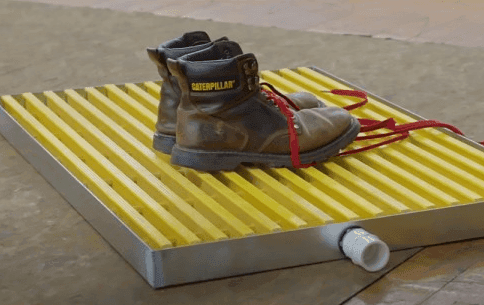
Top 10 Pathogens Found on Footwear
As the world makes its way out of a global pandemic, the general public’s focus on proper cleaning, disinfecting, and sanitizing practices will diminish to a degree.
It’s not possible, nor would it be healthy, to eliminate all viruses and bacteria from our homes and common areas. However, there are certain items that can be particularly troublesome when it comes to carrying harmful pathogens, and they should be paid attention to.
Footwear can be one of the biggest culprits of migrating germs, yet many don’t give a second thought to what they may be carrying on their shoes.
Several major studies have been performed on the presence of microbes on footwear, most notably by The Society for Applied Microbiology and The University of Arizona. Both studies came back with findings that footwear is often covered in copious amounts of bacteria, and sometimes viral particles as well.
In short, your shoes are dirtier than a toilet seat.
To help you understand what these germs are and how to defend against them, we’ve compiled a list of the ten most common variations. Please note that they are listed in no particular order, and there are hundreds or thousands of other microbes that could be present on footwear.
Viruses and Bacteria Most Frequently Found on Footwear
It looks like Mom was really onto something when she yelled at us for having our shoes on in the house...
How to Clean and Disinfect Your Shoes
Don’t live in fear of these germs. Rather, take simple measures and precautions to clean, disinfect, and sanitize footwear.
Depending on the environment, your needs for footwear sanitization may vary. Some of the heavier use applications will require hosing down and cleaning footwear before disinfecting and sanitizing.
Some of the most common applications include:

In situations where cleaning of footwear is required, we recommend the use of a boot wash station. This spill containment platform consists of a galvanized steel drain pan with FRP grating inlays. Installed with a drain line, you can easily wash away dirt, debris, and contaminants for boots and other footwear.
Many of our industrial clients opt for a more permanent solution. In these applications, we'll custom manufacture a boot wash station that's the exact dimensions you need, and can even add features like floor mounting tabs.

When it comes to sanitizing and disinfecting your footwear, a sanitizing floor mat is the best tool for the job. These rubber mats can hold various liquids like bleach solutions and other chemicals designed to kill harmful pathogens. After filling the mat with liquid, wipe the soles of your shoes on the scrubbers. Finally, dry the shoes off with an absorbent pad or towel, and you’ll be clear to enter the sanitary environment.
The sanitizing floor mats are available in two sizes (24 and 30), and are made of a durable natural rubber material. In combination with the boot wash platform, you'll have a convenient and long-lasting footwear cleaning station.
As always, Killarney Metals is here to help with any custom requirements. Shop our 200+ products in stock and made to order, design a custom pan, or contact us for help with unique projects!